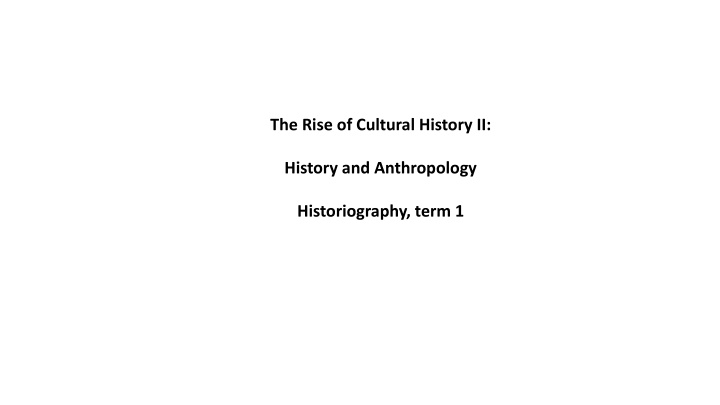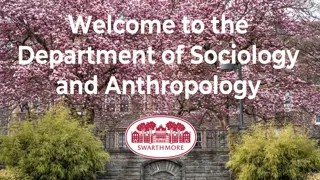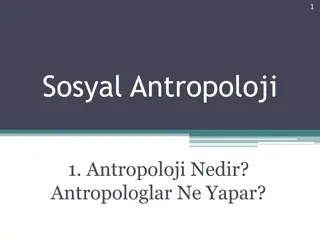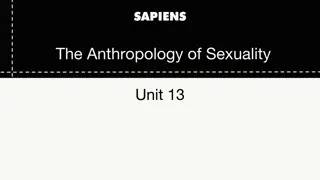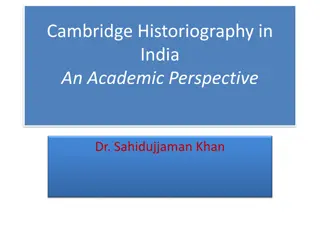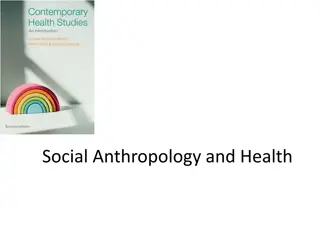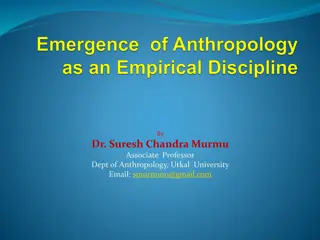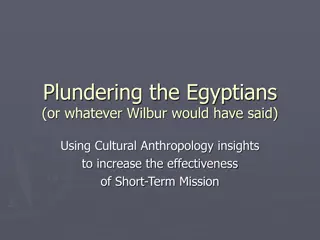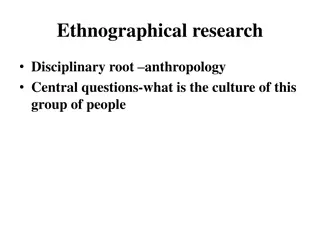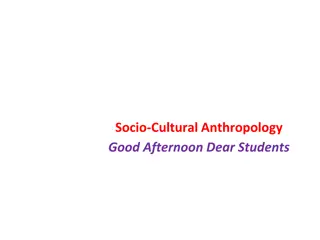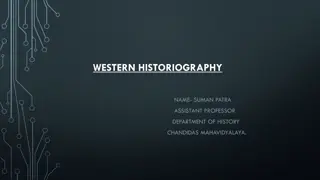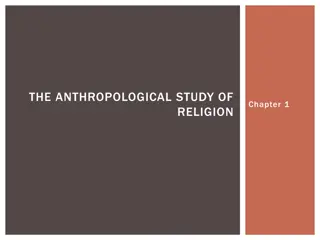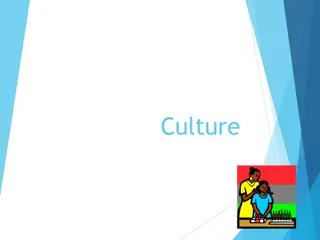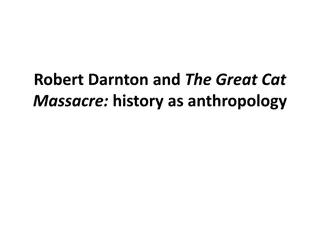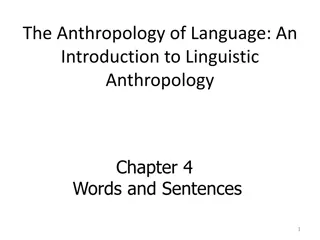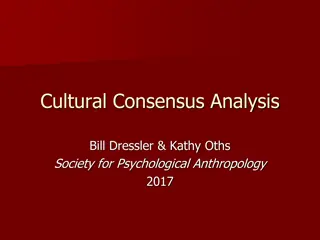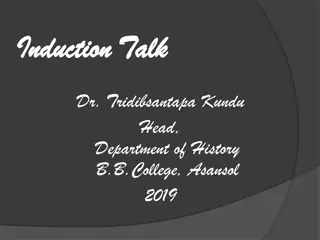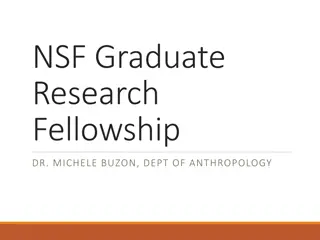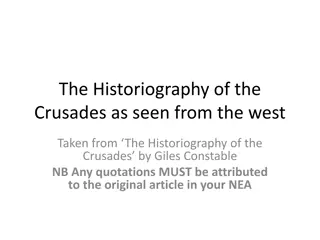The Rise of Cultural History II: History and Anthropology Historiography
This content explores the concepts of cultural history, Marxist thought, cultural hegemony, and the works of Antonio Gramsci. It delves into the history of anthropology, discussing key figures such as Franz Boas and Malinowski, and highlights the intersection of anthropology and history in understanding human societies.
Uploaded on Oct 09, 2024 | 2 Views
Download Presentation

Please find below an Image/Link to download the presentation.
The content on the website is provided AS IS for your information and personal use only. It may not be sold, licensed, or shared on other websites without obtaining consent from the author.If you encounter any issues during the download, it is possible that the publisher has removed the file from their server.
You are allowed to download the files provided on this website for personal or commercial use, subject to the condition that they are used lawfully. All files are the property of their respective owners.
The content on the website is provided AS IS for your information and personal use only. It may not be sold, licensed, or shared on other websites without obtaining consent from the author.
E N D
Presentation Transcript
The Rise of Cultural History II: History and Anthropology Historiography, term 1
Prison Notebooks published into English in early 1970s. He attempted to break from the economic determinism of tradition Marxist Thought; a key neo-Marxist How is concent achieved in a class society? (note: Weber was trying to find answers to this question too!) Cultural hegemony term describes how ruling capitalist class the bourgoisie use cultural institutions (such as education) of the superstructure to maintain power in capitalist societies. The bourgeoisie develops a hegemonic culture using ideology rather than violence, economic force, or coercion to stay in power. Via superstructure institution, they propagate their own values and norms so that they become commen sense values or normal values and ideas for all society, including those classes who should struggle against them. Subaltern Culture, for Gramsci, was Janus-faced: both a realm and force of emancipation and empowerment of working class experiences and a place for the ideological suppression of individual and collective alienation . Antonio Gramsci, 1891-1937
A bit of the history of anthropology..... Anthropology: The study of Man since the Enlightennment (Herder is one of the founders; the study of humans and human behaviour and societies. Several branches of study: Social anthropology/cultural anthropology: study the norms and values of societies Linguistic anthropology: studies how language affects social life Biological/physical anthropology: studies the biological development of humans Ethnography: (from Greek ethnos folk, people, nation and grapho "I write"): the accumulatio of necessary data by residence and observation, and the subsequent description of such societies
Social and cultural anthropologists: Franz Boas (1858 -1942) Bronis aw Kasper Malinowski (1884-1942), Argonauts of the Western Pacific (1922) Alfred Reginald Radcliffe-Brown (1881-1955) Problem for historians until WWII: they focus on writing ! But anthropology is mostly concerned with cultures who do not possess writing; assumption is: cultures with now writing do not have fixed memory and ergo no history! Growing interest in rituals and growing interest among early modern historians: In France: Early interests in such anthropological works and method among the 1st generation of Annales scholars Marc Bloch and Lucien Febvre In Britain: Keith Thomas, Religion and the Decline of Magic (1971) Alan Macfarlane, Witchcraft in Tudor and Stuart England: An regional and comparative Study (1970) Eric Hobsbowm, Primitive Rebels (1959) E. P. Thompson, The Making of the Working Class (1963;1968)
Until the 1970s......structural anthropology is very strong.... Claude Levi-Strauss Claude L vi-Strauss (1908 ---2009)[ structural anthropology structuralism: is a methodology that implies elements of human culture must be understood by way of their relationship to a broader, overarching system or structure. It works to uncover the structures that underlie all the things that humans do, think, perceive, and feel (Note: we discussed Marxism and Annales school (geography; Braudel) Emmanuel Le Roy Ladurie (3rd generation Annales school), Montaillou (uses structural anthropology in this famous study of a 13th century village)
Symbolic Anthropology becomes Big in the 1970s in history writing The Interpretation of Culture (1973) -- Balinese Cock fight Local Knowledge: Further Essays in Interpretive Anthropology (1983) Geertz sought to separate off anthropology from its influences by the social sciences and to define culture as a semiotic concept whose analysis is not an experimental science in search of law but an interpretive one in search of meaning. (Thick Description, 1973, p. 5). and .......historically transmitted pattern of meanings embodied in symbols, a system of inherited conceptions expressed in symbolic forms by means of which men communicate, perpetuate, and develop their knowledge about and their attitudes towards life . Thick description: a thick description results from a scientific observation of any particular human behavior that describes not just the behavior, but its context as well, so that the behavior can be better understood by an outsider. A thick description typically adds a record of subjective explanations and meanings provided by the people engaged in the behaviors, making the collected data of greater value for studies by other social scientists. Clifford Geertz, 1926-2006
Nathalie Zemon Davis on her discovery of symbolic anthropology for her study of early modern French history in the early 1970s: I could consider the social and cognitive meanings of symbolic and ritual forms of behavior, which earlier I had accounted for only in terms of groups solidarity Now I could look at the non-literature with more discernment and take more serious the techniques and endowments of oral culture, such as proverbs and memory devices. I began to doubt my earlier commitment to a single progressive trajectory towards the future (Davis, 1997, 14).
The Great Cat Massacre and Other Episodes in French Cultural History (1984) History writing in the ethnographic grain Our own inability to get the joke is an indication of the distance which separates us from the workers of preindustrial Europe. The perception of that distance may serve as the starting point of an investigation, for anthropologists have found that the best points of entry in an attempt to penetrate an alien culture can be those where it seems to be most opaque. When you realize that you are not getting something a joke, a proverb, a ceremony that is particularly meaningful to the natives, you can see where to grasp a foreign system of meaning in order to unravel it. By getting the joke of the great cat massacre, it may be possible to get a basic ingredient of artisanal culture under the Old Regime. When we cannot get a joke, or a ritual, or a poem, we know we are on to something. By picking at the document where it is most opaque, we may be able to unravel an alien system of meaning. Robert Choate Darnton (1939-),
The role of difference and surprise is central; like other cultures past societies are a foreign land other people are other. They do not think the way we do. And if we want to understand their way of thinking, we should set out with the idea of capturing otherness. [ ] nothing is easier than to slip into the comfortable assumption that Europeans thought and felt two centuries ago just as we do today allowing for the wigs and wooden shoes. We constantly need to be shaken out of a false sense of familiarity with the past, to be administered doses of culture shock.
